Solved Example Problems | Geometry | Mathematics - Constructions | 9th EM Mathematics : Geometry
Chapter: 9th EM Mathematics : Geometry
Constructions
Constructions
Practical Geometry is the method of applying the
rules of Geometry dealt with the properties of Points, Lines and other figures
to construct geometrical figures. “Construction” in Geometry means to draw
shapes, angles or lines accurately. The geometric constructions have been
discussed in detail in Euclid’s book ‘Elements’. Hence these constructions are
also known as Euclidean constructions. These constructions use only compass and
straightedge (i.e. ruler). The compass establishes equidistance and the
straightedge establishes collinearity. All geometric constructions are based on
those two concepts.
It is possible to construct rational and irrational
numbers using straightedge and a compass as seen in Chapter II. In 1913 the
Indian mathematical Genius, Ramanujan gave a geometrical construction for
355/113 =π. Today with all our accumulated skill in exact measurements. It is a
noteworthy feature that lines driven through a mountain meet and make a
tunnel.In the earlier classes, we have learnt the construction of angles and
triangles with the given measurements.
In this chapter we learn to construct Circumcentre
and Orthocentre of a triangle by using concurrent lines.
1. Construction of the Circumcentre of a Triangle Circumcentre
The Circumcentre is the point of concurrency of the
Perpendicular bisectors of the sides of a triangle.
It is usually denoted by S.
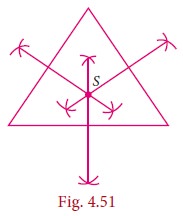
Circumcircle
The circle passing through all the three vertices
of the triangle with circumcentre (S)
as centre is called circumcircle.
Circumradius
The line segment from any vertex of a triangle to
the Circumcentre of a given triangle is called circumradius of the
circumcircle.
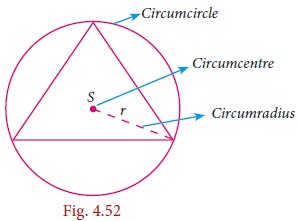
Example 4.5
Construct the circumcentre of the
ΔABC with AB = 5 cm, +A = 60° and +B = 80° draw the circumcircle and find the circumradius of the ΔABC.
Solution
Step 1 Draw the
ΔABC with the given measurements
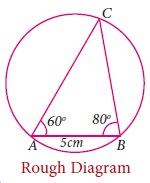
Step 2
Construct the perpendicular bisector of any two
sides (AC and BC) and let them meet at S which is the circumcentre.
Step 3
S as centre and SA = SB = SC as radius,
draw the Circumcircle to passes through A,B and C.
Circumradius = 3.9 cm.

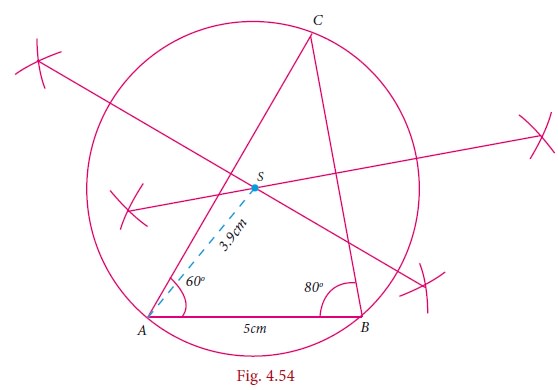
2. Construction of Orthocentre of a Triangle
Orthocentre
The orthocentre is the point of concurrency of the
altitudes of a triangle. Usually it is denoted by H.
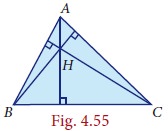
Example 4.6
Construct ŒîPQR whose sides are PQ = 6 cm ‚àÝQ = 60o and QR = 7 cm and locate its Orthocentre.
Solution
Step 1 Draw the
ΔPQR with the given measurements.
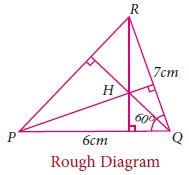
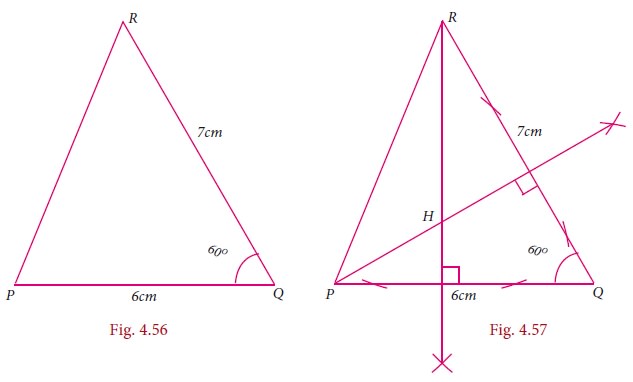
Step 2:
Construct altitudes from any two vertices R and P,
to their opposite sides PQ and QR respectively.
The point of intersection of the altitude H is the
Orthocentre of the given ΔPQR.